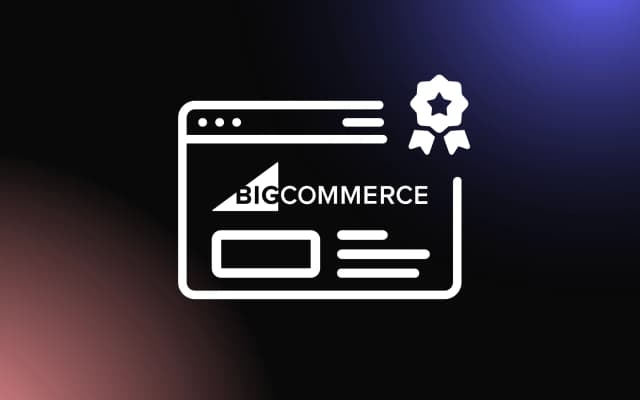
In the digital realm, where attention spans are notoriously short, one of the key metrics of a website's success is the amount of time visitors spend on a page. Known as 'Time on Page', this metric is a crucial indicator of user engagement and content relevance.
For website owners and content creators, increasing this time is pivotal in enhancing user experience, boosting SEO rankings, and ultimately driving conversions.
In this beginner's guide, we will explore various strategies and best practices to effectively increase the time visitors spend on your pages. From crafting compelling content to optimizing page design, we'll provide you with actionable insights to captivate your audience and keep them engaged longer.
Understanding Time on Page: What It Is and Why It Matters

Definition and Importance
Time on Page is a critical metric in web analytics that measures the duration a visitor spends on a specific webpage.
It's crucial for several reasons:
- User Engagement: It indicates how engaging and relevant the content is to your audience. Longer time suggests that visitors find the content valuable.
- Website Quality: High time on page often reflects well-designed, high-quality content, signaling a positive user experience.
Impact on SEO and User Engagement
Time on Page significantly influences SEO and user engagement:
- SEO Ranking: Search engines like Google use time on page as an indicator of content quality. Pages where users spend more time can rank higher in search results.
- User Engagement Insights: This metric helps in understanding what content resonates with your audience, guiding content strategy and website design for better engagement.
Strategies for Captivating Your Audience Immediately
Engaging Headlines and Introductions
Creating an immediate impact on your audience starts with the very first words they see:
- Craft Compelling Headlines: Your headline should be intriguing, clear, and relevant. It's the first hook that draws readers in.
- Powerful Introductions: Begin with a statement, question, or story that speaks directly to the reader's interests or challenges. The goal is to establish a connection and encourage further reading.
Using Visuals to Grab Attention
Visual elements play a crucial role in capturing and maintaining audience attention:
- Strategic Imagery: Use high-quality, relevant images that complement and enhance your message. A striking image can make your content more memorable and engaging.
- Infographics and Videos: These can simplify complex information and make your content more digestible. They're particularly effective for explaining concepts or data.
Enhancing Content Quality and Relevance
Creating Valuable and Informative Content
Quality content is the cornerstone of user engagement and retention:
- Research and Depth: Ensure your content is well-researched and provides in-depth information. This establishes credibility and positions you as an authority in your field.
- Practical and Actionable: Offer practical advice or solutions. Content that readers can apply in their lives or work is more likely to be valued and shared.
Tailoring Content to Audience Interests
Understanding and addressing your audience's needs is key to content relevance:
- Audience Analysis: Regularly analyze your audience's preferences, challenges, and questions. Use surveys, social media interactions, and comment sections for insights.
- Personalization: Customize content to address the specific interests or problems of your audience. This can be achieved through targeted blog posts, personalized emails, or segmented social media content.
Improving Website Design and User Experience
Easy Navigation and Readability
A user-friendly website design is crucial for retaining visitors:
- Intuitive Layout: Design your website with a clear and logical structure. Menus should be easy to find and use, guiding visitors smoothly from one section to another.
- Readability: Use fonts and colors that are easy on the eyes. Break text into smaller paragraphs, use bullet points, and include subheadings to enhance readability.
Responsive and Fast-Loading Pages
Optimizing your website's performance is essential for a positive user experience:
- Mobile Responsiveness: Ensure your website is mobile-friendly. With the increasing use of smartphones, a responsive design that adapts to different screen sizes is vital.
- Speed Optimization: Page loading speed is a critical factor. Optimize images, leverage browser caching, and minimize HTTP requests to improve loading times.
Utilizing Interactive Elements to Engage Users
Incorporating Multimedia and Interactive Graphics
Enhancing user engagement through interactive elements:
- Multimedia Integration: Use videos, audio clips, and animations to make your content more engaging. Interactive infographics and clickable charts can also provide a more dynamic user experience.
- Interactive Graphics: Implement interactive graphics that respond to user actions. This could include hover effects, clickable elements, or animations that activate on scrolling.
Encouraging User Participation and Feedback
Interactive features that promote user involvement:
- Interactive Quizzes and Polls: Engage users with quizzes or polls related to your content. This not only makes the experience more engaging but also provides valuable insights into your audience’s preferences.
- Comment Sections and Forums: Encourage users to participate in discussions by providing comment sections or forums. This fosters a community feeling and can increase the time users spend on your site.
Leveraging Internal Linking to Keep Visitors Engaged
Smart Link Placement
Effective strategies for internal link placement:
- Contextual Relevance: Place links within your content that are contextually relevant to the topic at hand. This ensures that the links feel natural and are more likely to be clicked by interested readers.
- Strategic Positioning: Position links in high-visibility areas, such as within the first few paragraphs, to catch the reader's attention early. Avoid overwhelming the user with too many links; instead, focus on quality and relevance.
Creating a Content Journey for the User
Guiding users through a curated content experience:
- Sequential Linking: Create a narrative or learning path by linking to related articles in a sequence. This can guide the user through a series of topics, enhancing their understanding and engagement.
- Thematic Clusters: Group related content together and interlink these articles. This approach not only helps in keeping the user engaged but also establishes your site as a comprehensive resource on particular topics.
Examples: Websites Excelling in Time on Page
Websites that excel in keeping visitors engaged for longer periods, known as "Time on Page," often feature compelling content, interactive elements, and intuitive design. Here are some examples of websites known for their high average time on page:
1. Medium
- Features: In-depth articles, personalized content feeds, and a clean, distraction-free reading interface.
- Why It Works: The platform hosts a wide variety of quality long-form content that encourages prolonged reading sessions.
2. BuzzFeed
- Features: Interactive quizzes, engaging listicles, and viral content.
- Why It Works: BuzzFeed's mix of entertaining, shareable content and interactive features like quizzes keeps users engaged for longer periods.
3. TED
- Features: Inspirational and educational videos from experts in various fields.
- Why It Works: TED Talks are typically engaging and thought-provoking, encouraging viewers to watch entire presentations and explore related content.
4. National Geographic
- Features: High-quality photography, in-depth articles on nature and science, and immersive storytelling.
- Why It Works: The combination of stunning visuals and captivating content makes users spend more time exploring articles and photo galleries.
5. YouTube
- Features: A vast library of videos covering every imaginable topic.
- Why It Works: YouTube's algorithm is designed to keep users watching by recommending highly relevant and engaging content.
6. Wikipedia
- Features: Extensive and detailed articles on a wide range of topics.
- Why It Works: The depth and breadth of information available on Wikipedia encourage prolonged reading and exploration.
Measuring and Analyzing Time on Page
Tools and Techniques for Tracking
Key methods for effectively tracking time spent on a webpage:
- Analytics Software: Utilize tools like Google Analytics to monitor user behavior. These platforms provide detailed insights into how long visitors stay on specific pages, allowing you to gauge their interest and engagement levels.
- Heatmaps and Session Recordings: Tools like Hotjar or Crazy Egg offer heatmaps and session recordings, which not only show where users spend time but also how they interact with the content, providing a more nuanced understanding of user engagement.
Interpreting Data and Making Informed Decisions
Guidelines for using time-on-page data to enhance website performance:
- Benchmarking: Compare your time-on-page metrics against industry standards or your own historical data to understand where you stand.
- Content Analysis: High time-on-page could indicate engaging content, while lower times might suggest the need for improvement. Analyze the content on pages with varying engagement levels to identify what works and what doesn’t.
- User Journey Optimization: Use the data to refine the user journey. If certain pages consistently show low engagement, consider revising the content or improving navigational elements to enhance the user experience.
Continuous Improvement: Testing and Optimizing
A/B Testing and User Feedback
Key strategies for refining your website or product through continuous testing:
- A/B Testing: Implement A/B testing to compare different versions of a webpage or feature. This method allows you to test changes in design, content, or functionality to see which version performs better in terms of user engagement, conversion rates, or other key metrics.
- Collecting User Feedback: Regularly gather feedback from your users through surveys, feedback forms, or direct user interviews. This direct input is invaluable for understanding user needs and preferences, and for identifying areas for improvement.
Adapting to Changing User Preferences and Trends
Guidelines for staying relevant and responsive to evolving user needs:
- Market Research: Keep abreast of the latest trends in your industry and user behavior. Use tools like Google Trends or social media analytics to understand what your audience is currently interested in or concerned about.
- Responsive Design: Regularly update your website or product to reflect changing user preferences and trends. This could involve updating content, redesigning layouts, or introducing new features.
- Iterative Development: Adopt an iterative approach to development, where you continuously implement small changes and measure their impact. This allows for more flexibility and quicker adaptation to user feedback and changing trends.
Conclusion
Increasing the time users spend on your website is a multifaceted challenge that requires a thoughtful approach to content, design, and user experience. Throughout this guide, we've discussed several strategies, such as improving content quality, enhancing page layout, and optimizing for user engagement. The key takeaway is that keeping visitors engaged is not just about the quantity of the content but its relevance, value, and presentation.
By implementing these strategies, you can create a more engaging online environment that not only captivates your audience but also contributes to your site's overall success. Remember, the goal is to provide a satisfying and informative experience that encourages visitors to explore your site further, thereby increasing their time on page and fostering a deeper connection with your content.



